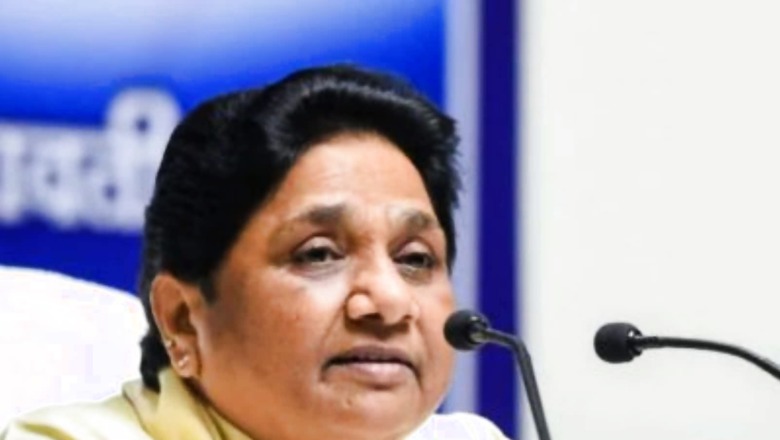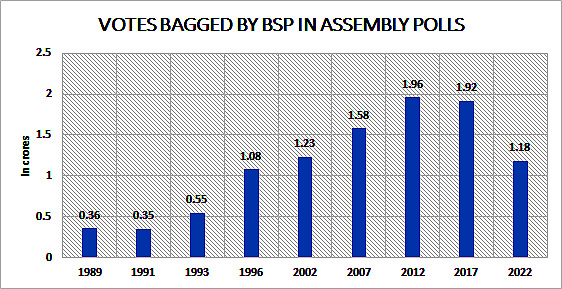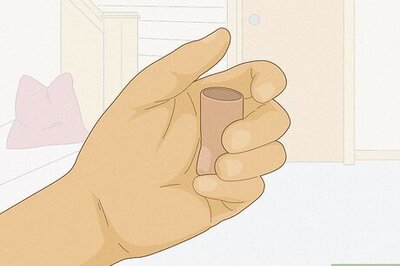
views
In 2007, she rode to power and not just became the first female Dalit chief minister in the country but also Uttar Pradesh’s first CM to end the fractured mandates and short-lived governments. Mayawati, the Bahujan Samaj Party supremo, changed a lot of things in UP politics. However, as the results for the 2022 polls were revealed on March 10, the once-dominant party shrank to just one seat and the lowest vote share in nearly three decades.
Mayawati, who became the state’s first chief minister to complete a term, could only manage to bag the Rasara seat in the recent assembly polls. However, numbers suggest that the party has not completely lost its popularity. The BSP is third in UP this time after the Bharatiya Janata Party and the Samajwadi Party in terms of vote percentage. While the BJP that swept the 2022 assembly polls got 255 seats and 41.29% votes, the SP won 111 seats with 32.06% votes. The BSP has managed to get 12.88% votes, even though it has got fewer seats than the Apna Dal (Soneylal), Suheldev Bharatiya Samaj Party (SBSP), and even Rashtriya Lok Dal (RLD).

Mayawati, famous as “Behenji”, became the second female chief minister of Uttar Pradesh after Sucheta Kripalani and has taken the charge four times. She first became the CM in 1995, then in 1997 and 2002 as well, before the historic 2007 term.
The BSP was formed by Kanshi Ram in 1984 and Mayawati took its reins in 2001. When the party first went for polls in 1989, it managed to get 13 seats and its vote share was 9.41%. The BSP witnessed the peak in 2007 as it grabbed 30.43% of the votes and 206 seats in UP. Since 1996, it has bagged nearly 20% of the total vote share, except in this election. In 2012 and 2007, this share was more than 25%.
The party was getting a little over 35 lakh votes until the 1991 elections. This rose to over 55 lakh votes in 1993 and, since 1996, the party has been getting over one crore votes. In 2007, when the BSP swept the UP assembly polls, it had got 1.58 crore votes. In 2012 and 2017, it bagged nearly two crore votes. However, in 2022, its votes were 1.18 crore.

Despite shrinking, the party has its ground in the Lok Sabha elections as well and managed to have the core votes. In the 2004 parliamentary polls, the BSP fielded 435 candidates, and only 19 won. The party’s vote share was 5.33% as it secured 2.07 crore votes. At least 358 contestants lost deposits. A candidate needs to secure at least a sixth (16.67%) of the votes polled in the constituency to get back the deposit. The contestants who fail to get the required number of votes lose or forfeit their deposits.
In 2009, the BSP fielded 500 candidates, and 21 won while 410 forfeited their deposits. The party bagged 2.57 crore (6.17%) votes. In the next Lok Sabha polls in 2014, out of the 503 candidates fielded by the party, none made it to Parliament while 447 lost their deposits. The party’s vote share dropped to 4.19% (2.29 crore). In 2019, 10 BSP candidates managed to enter the Lok Sabha out of 383 in the fray while 345 candidates lost their deposits. The party secured 3.66% (2.22 crore) of the total votes.
After the 2022 assembly poll results were announced, Mayawati said it was a “lesson” and added that “only the BSP can stop the BJP”.
“The poll results are contrary to the BSP’s expectations. We should not be discouraged by it. Instead, we should learn from it, introspect and carry forward our party movement, and come back to power,” the 66-year-old leader said while addressing the media after the results were announced.
Read all the Latest Politics News and Breaking News here



















Comments
0 comment